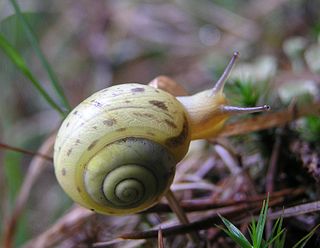
Bradybaeninae is a taxonomic subfamily of medium-sized to small land snails, terrestrial pulmonate gastropod mollusks in the family Camaenidae. Members of the subfamily Bradybaeninae are defined by the presence of two divided glands with one to two accessory sacs.

Aegista is a genus of air-breathing land snails, terrestrial pulmonate gastropod mollusks in the family Camaenidae.

Camaenidae is a family of air-breathing land snails, terrestrial pulmonate gastropod mollusks in the superfamily Helicoidea, the typical snails and their allies. This is one of the most diverse families in the clade Stylommatophora.

Elonidae is a family of air-breathing land snails, terrestrial pulmonate gastropods mollusks in the superfamily Helicoidea.
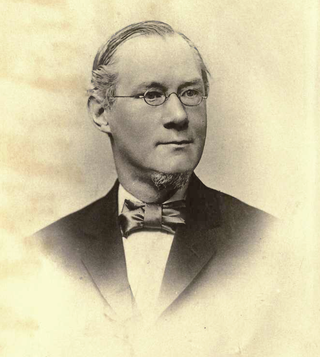
George Washington Tryon Jr. was an American malacologist who worked at the Academy of Natural Sciences in Philadelphia.
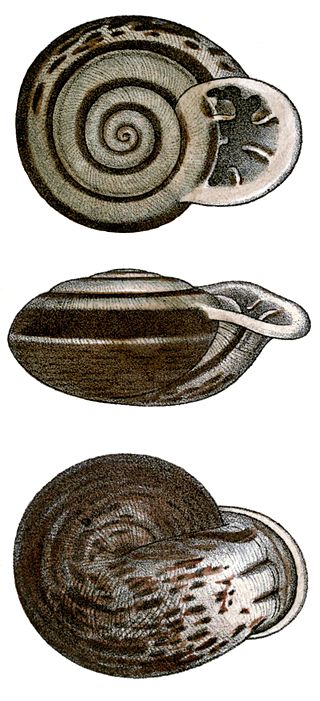
Anostoma, common name the up-mouth snails, is a genus of tropical air-breathing land snails, terrestrial pulmonate gastropod mollusks in the family Odontostomidae. Snails in this genus are found in Brazil.

Ringicella is a genus of tropical air-breathing land snails, terrestrial pulmonate gastropod mollusks in the family Odontostomidae.
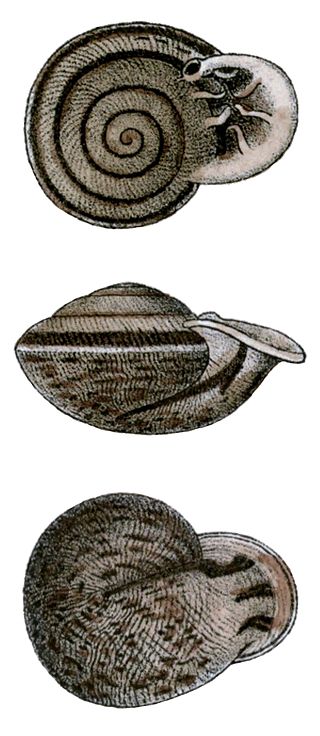
Ringicella ringens is a species of air-breathing land snail, a terrestrial pulmonate gastropod mollusk in the family Odontostomidae.

Sphincterochila baetica is a species of air-breathing land snail, a terrestrial pulmonate gastropod mollusk in the family Sphincterochilidae.
Chloritis is a genus of air-breathing land snails, terrestrial pulmonate gastropod mollusks in the subfamily Hadrinae of the family Camaenidae.

Pommerhelix monacha is a species of air-breathing land snail, a terrestrial pulmonate gastropod mollusc in the family Camaenidae.

Aegista subchinensis is a species of air-breathing land snail, a terrestrial pulmonate gastropod mollusc in the family Camaenidae.

Pseudiberus is a genus of air-breathing land snails, terrestrial pulmonate gastropod mollusks in the family Bradybaenidae, inhabiting in Shandong, Henan, Hebei and Shanxi Provinces. PlatypetasusPilsbry, 1894 was previously considered as synonyms of Pseudiberus, however Zhang et al. (2024) corrected it via phylogenetics based on morphology and molecules.
Cathaica fasciola is a species of air-breathing land snail, a terrestrial pulmonate gastropod mollusk in the family Camaenidae, which is similar to Cathaica pyrrhozona on shell morphology.

Cathaica is a genus of small, air-breathing land snails, or terrestrial molluscs in the subfamily Bradybaeninae of the family Camaenidae. Cathaica pyrrhozona is the type species of this genus.

Aegista oculus is a species of air-breathing land snails, a terrestrial pulmonate gastropod in the family Camaenidae.
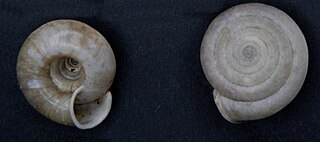
Aegista chinensis is a species of air-breathing land snails, a terrestrial pulmonate gastropod in the family Camaenidae.

Aegista vermis is a species of air-breathing land snails, a terrestrial pulmonate gastropod in the family Camaenidae.

Aegista platyomphala is a species of air-breathing land snails, a terrestrial pulmonate gastropod in the family Camaenidae.
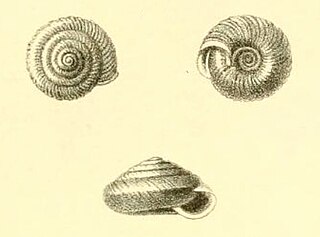
Aegista gottschei is a species of air-breathing land snails, a terrestrial pulmonate gastropod in the family Camaenidae.


















